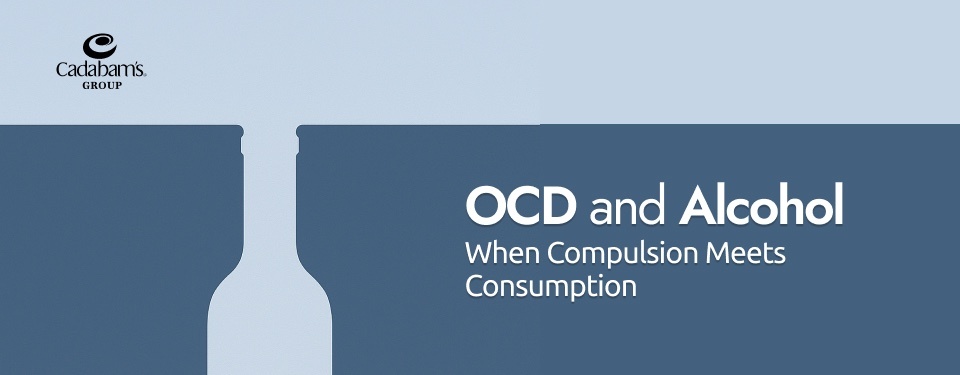Why do people who drink find it difficult to think rationally? Why cannot they make beneficial decisions? Why do they forget so easily? Does alcohol affect the brain? These are among many questions that people may ask.
Blurred vision, difficulty walking, slurred speech, slowed reaction times, impaired memory. Clearly alcohol affects the brain. One need not be an alcoholic to know that these changes happen. A drink or two will create these difficulties. On the other hand, a person who has been drinking for a couple or more years have shown that there are cognitive deficits that persist well after achieving sobriety. We all know that chronic alcoholism has been associated with long standing affects that has a direct relationship with brain dysfunction.
There are a number of factors that affect the extent to which alcohol affects the brain. Some of them are,
- How much and how often a person drinks;
- The age at which he or she first began drinking, and how long he or she has been drinking;
- The person’s age, level of education, gender, genetic background;
- Family history of alcoholism;
- Whether he or she is at risk as a result of prenatal alcohol exposure;
- His or her general health status.
Physiological basis of addiction
It is well established that alcohol runs in the family. It’s partly due to the genetic factors underlying addiction. Studies have suggested that there is 50% heritability for males and 25% for females. Type 1 and type 2 are two kinds of alcohol dependence. Type 2 is strongly genetic, has an early age of onset and is associated with criminality and sociopathic disorder whereas; type 1 has a later onset and is only mildly genetic.
The known addictive substances, like depressants, stimulants, hallucinogens act to increase the availability of the natural stimulant dopamine in the areas of the brain-nucleus accumbens, prefrontal, basal ganglia, thalamus, amygdala and hypothalamus. These structures are believed to form an important brain reward circuit. This circuit is normally activated by reinforcers such as food, water and sex. Exogenous substances produce greater effects than the natural reinforcers. Accordingly, the natural drives may be subsumed by the search for substances and the addicted individual may become dysfunctional in all other aspects of life.
Cognitive deficits in Alcoholism
Most alcoholics exhibit mild-to-moderate deficiencies in intellectual functioning, along with diminished brain size and regional changes in brain-cell activity. The most prevalent alcohol-associated brain impairments affect visuo-spatial abilities and higher cognitive functioning. Visuo-spatial abilities include perceiving and remembering the relative locations of objects in 2- and 3-dimensional space. Examples include driving a car or assembling a piece of furniture based on instructions contained in a line drawing. Higher cognitive functioning includes the abstract-thinking capabilities needed to organize a plan, set it in motion and change it as needed.
Most alcoholics entering treatment perform as well as non-alcoholic on tests of overall intelligence. However, alcoholics perform poorly on neuropsychological tests that measure specific cognitive abilities. For example, an alcoholic who has remained abstinent after treatment may have no apparent difficulty filing office documents correctly, a task that engages multiple brain regions. However, that same person might be unable to devise a completely different filing system, a task closely associated with higher cognitive functioning
Blackouts and Memory Lapses
Alcohol primarily affects the ability of a person to form long term memories, meanwhile preserving already existing long term memories. The amount of alcohol a person consumes is directly related to the extent of memory loss. A blackout is a phenomenon caused by the intake of alcohol or other substance in which long term memory creation is impaired or there is a complete inability to recall the past.
Memory is formed and stored. Atkinson and Shiffrin (1968) described in his model that memory formation and its storage takes place in several stages, proceeding from sensory memory (which lasts up to a few seconds) to short term memory (which lasts from seconds to minutes depending upon whether the information is rehearsed) to long term storage. Alcoholics essentially have
been seen able to recall information that has been presented for a few seconds to a few minutes. However, with the increase in amount of alcohol, the person is unable to store information across delays. They are able to recall information stored prior to the acute intoxication.
In 1969, Goodwin and colleagues published two of the most influential studies in the literature on blackouts. The authors posited the existence of two qualitatively different types of blackouts: en bloc and fragmentary blackouts. People experiencing en bloc blackouts are unable to recall any details whatsoever from events that occurred while they were intoxicated, despite all efforts by the drinkers or others to cue recall. Fragmentary blackouts involve partial blocking of memory formation for events that occurred while the person was intoxicated. People with fragmentary blackouts often become aware that they are missing pieces of events only after being reminded that the events occurred. Interestingly, these reminders trigger at least some recall of the initially missing information. Research suggests that fragmentary blackouts are far more common than those of the en bloc variety.
Blackouts are much more common among social drinkers than previously assumed. An important brain area known as the Hippocampus is severely affected by alcohol which impairs memory.
It has also been seen that adherence to treatment is poor partly due to the memory problems faced.
Neurological Disorders related to Alcohol
Wernicke–Korsakoff Syndrome: Up to 80 percent of alcoholics, however, have a deficiency in
thiamine and some of these people will go on to develop serious brain disorders such as Wernicke–Korsakoff syndrome (WKS). WKS is a disease that consists of two separate syndromes, a short–lived and severe condition called Wernicke’s encephalopathy and a long–lasting and debilitating condition known as Korsakoff’s psychosis.
The symptoms of Wernicke’s encephalopathy include mental confusion, paralysis of the nerves that move the eyes (i.e., oculomotor disturbances), and difficulty with muscle coordination. For example, patients with Wernicke’s encephalopathy may be too confused to find their way out of a room or may not even be able to walk. Many Wernicke’s encephalopathy patients, however, do not exhibit all three of these signs and symptoms, and clinicians working with alcoholics must be aware that this disorder may be present even if the patient shows only one or two of them. In fact, autopsy studies indicate that many cases of thiamine deficiency–related encephalopathy may not be diagnosed in life because not all the “classic” signs and symptoms were present or recognized.
A similar disorder is alcoholic dementia is associated with white and grey cortical loss, and is believed to be due to numerous interacting mechanisms. There is more global impairment in memory functions. Cerebellar degeneration with loss of Purkinje cells in the cerebellar cortex manifests as limb ataxia and dysarthria. Alcoholic hallucinosis is a rare disorder in which auditory hallucinations are experienced in a clear sensorium. These are usually unpleasant and the patient is usually distressed by them. They usually respond to anti-psychotic medication, but if hallucinations have persisted for some months they may persist indefinitely.
Alcohol effects on Women
Studies that have been conducted on alcoholic women (a) generally report neuro-psychological deficits in the same cognitive areas as have been reported in detoxified alcoholic men and (b) feature problems in executive functions and visuo-spatial abilities (Glenn, 1993; Hochla & Parsons, 1982; Nixon & Glenn, 1995; Parsons et al., 1987). In light of the general findings, it is reported that women on average drink less than men, drink for a shorter period of time than men, and yet display comparable cognitive deficits, it has been hypothesized that women are especially vulnerable to the toxic effects of alcohol (Glenn, Parsons, Sinha, & Stevens, 1988; Hochla & Parsons, 1982; Nixon & Glenn, 1995). However, in contrast to this assertion are studies (e.g., Silberstein & Parsons, 1979) showing alcoholic women to have milder cognitive deficits than men, although deficits tend to be in the same functional domains. Thus, it remains controversial whether alcoholic women display the same severity or pattern of deficits as documented in alcoholic men and whether observed sex differences are related to differences in life time alcohol consumption rates.
Conclusion
Addiction is genetic which is a personal risk factor and since addiction has a neurological basis, thinking that one can control ones drinking might not always work. The effects are widespread. Memory, visuo-spatial abilities, higher cognitive functioning and memory amongst others are grossly affected. Alcohol has global effects on the brain functions thus affecting what is visible outside – behavior. Chronic alcoholism leads to various disorders relating to the brain that leaves an impact on the individual as well as the family.
Every individual is different and the good news is that the above and many other deficits are reversible with abstinence. Newly detoxified adult alcoholics often exhibit mild yet significant deficits in some cognitive abilities, especially problem-solving, short-term memory and visuo-spatial abilities. By remaining abstinent, however, the recovering alcoholic will continue to recover brain function over a period of several months to 1 year, with improvements in working memory, visuo-spatial functioning and attention which could be accompanied by significant increases in brain volume compared with treated alcoholics who have subsequently relapsed to drinking.
.webp)
.jpg)






